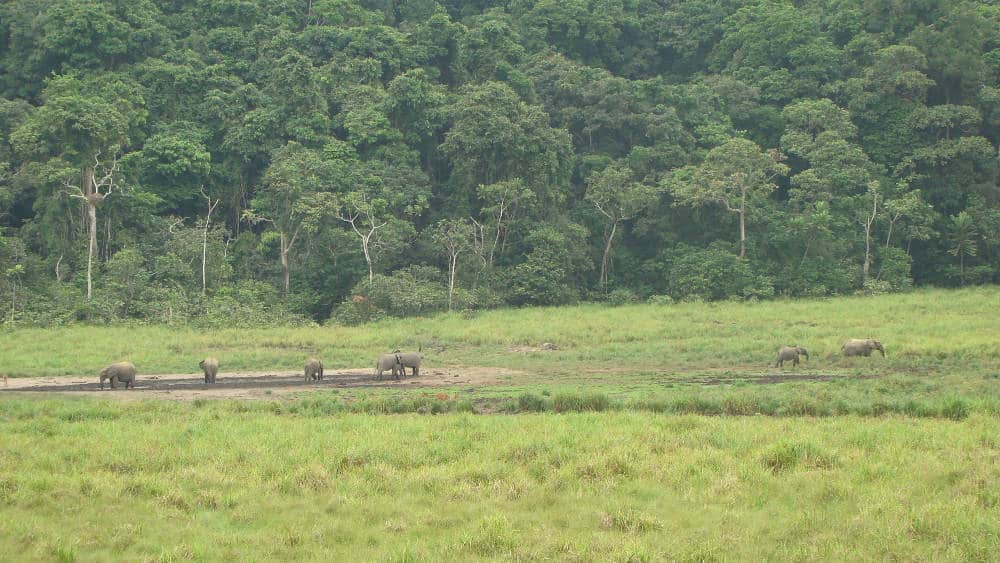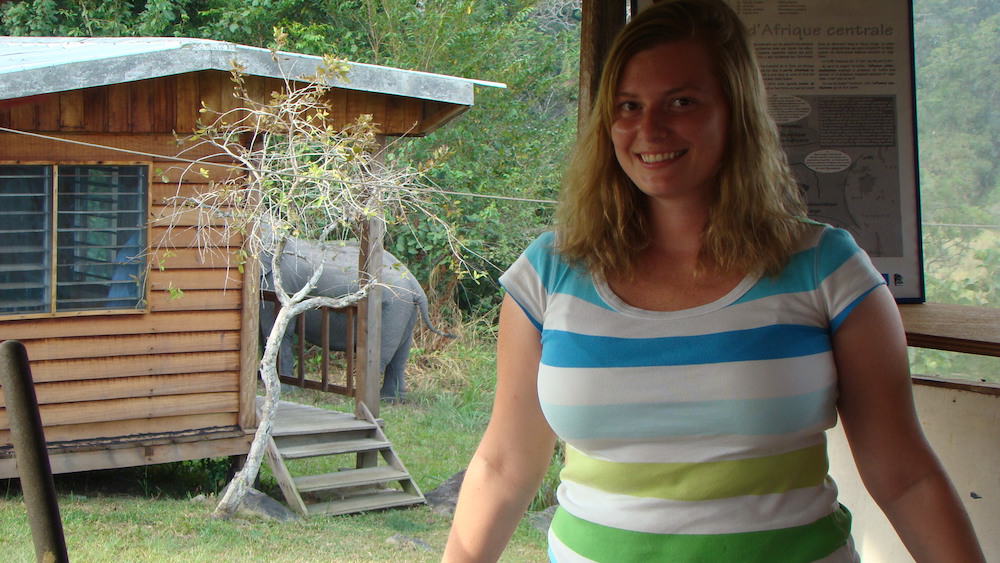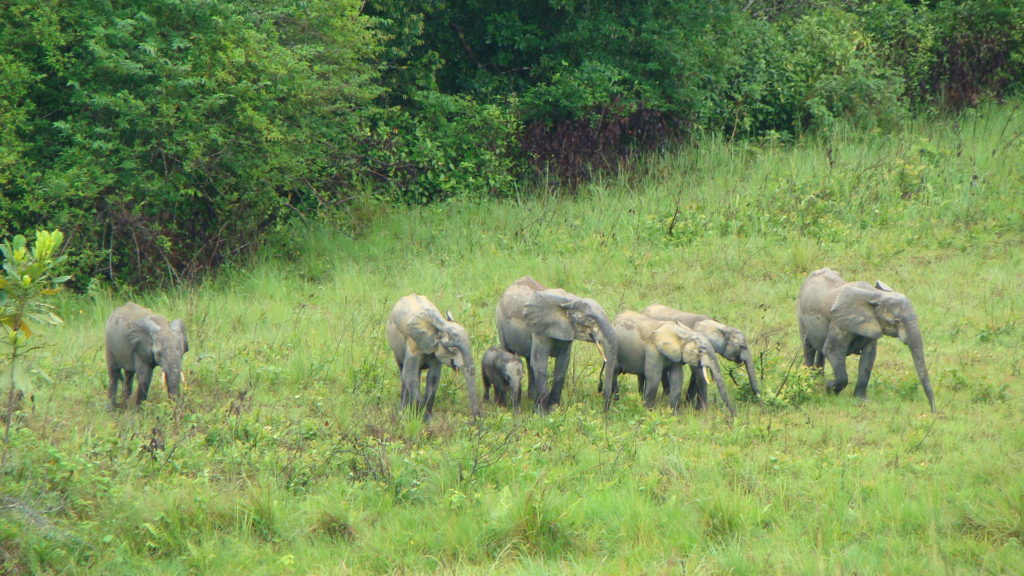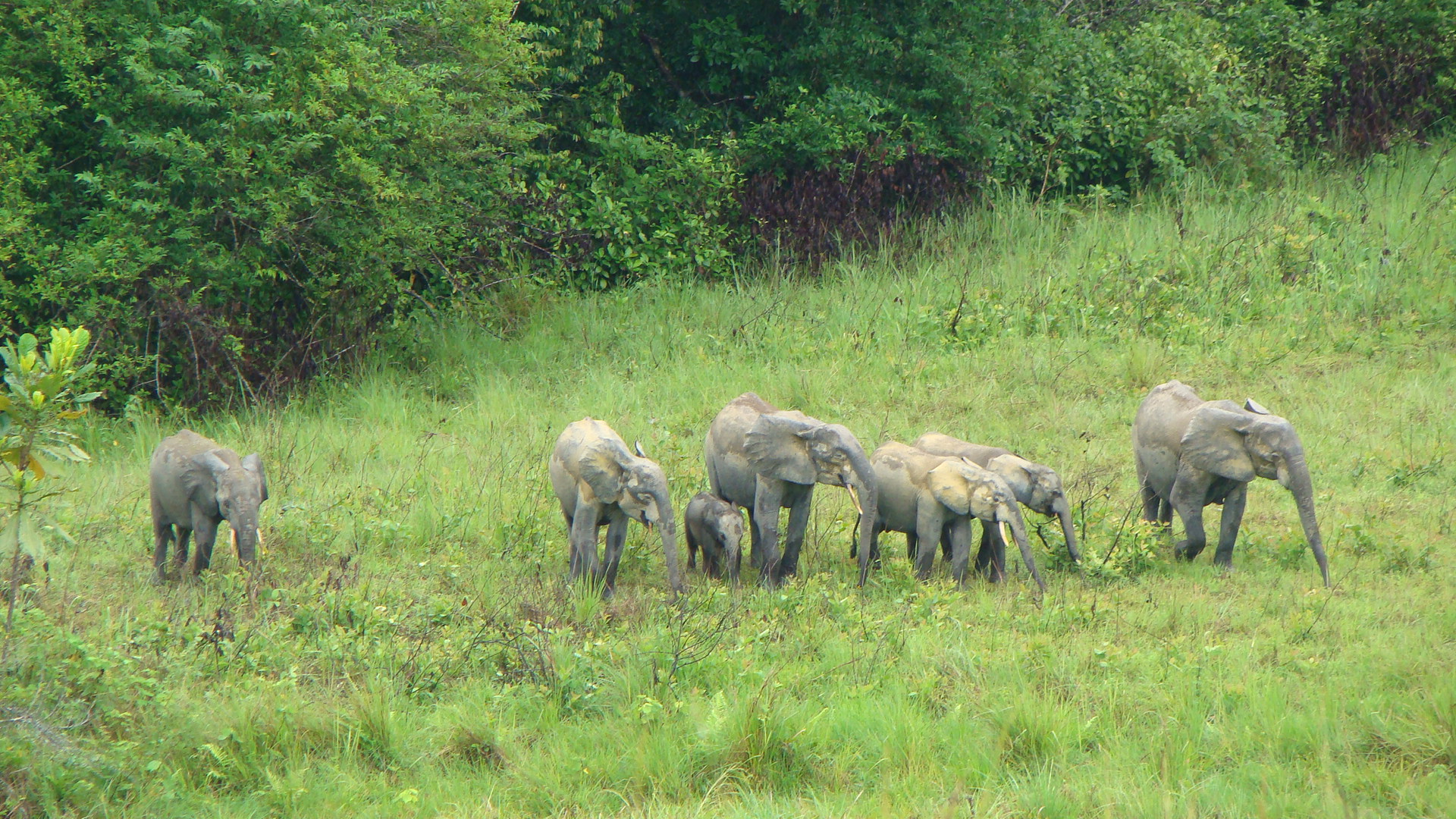I studied African forest elephants for my Ph.D. and have given many presentations on my research and their behavior. At these presentations and in an “Ask Me Anything” event for Reddit, I’ve been asked some great questions! Below I’ve aggregated the questions regarding my elephant research and have answered them below.
How did you get interested in elephants?
I got interested in elephants because they have so many weird and sophisticated behaviors! But I also fell in love with them when I first saw them in the wild in Kenya.
For example, they touch the bones of other elephants, even more so than other species they come across. Scientists have studied this in the wild and have presented elephants with the bones of elephants among other animals. They spend more time with elephant bones.
This research was initiated because scientists in the field noticed that elephants would come across elephant bones and spend a lot of time touching them, almost like they are remembering the individual.
Elephants also go out of their way to help other elephants that are in distress or dying. Even if they aren’t genetically related or after already they have died. There are very few species in the animal kingdom that have behaviors like this.
Elephants also also really smart, have sophisticated social networks and societies. I could not believe that African forest elephants were so little studied. When I found this out, I knew I had to study them!
When did you start realizing you had a love for elephants?
When I saw them in Kenya in 2002. I was about 20 yrs old and learned about them from an elephant researcher. It’s so amazing to be in the presence of such a large animal. It really gives you a visceral reaction. Once I learned about their societies and complex social behavior, I was hooked!
How did you become an elephant researcher?
In a very indirect way! I always loved animals growing up, but the only scientist I knew of was Jane Goodall. I thought what she did was so brave – moved to a remote forest in Tanzania to live with chimpanzees. I thought I never thought I had it in me to do something like that.
I also didn’t know how to become a scientist. I wanted to be an actress when I was in college, but studied biology too as a major. In case acting didn’t work out I thought I could go to med school and choose the “safe” career of being a medical doctor.
My brother suggested I study abroad and I loved that idea. I was looking at theater programs in Europe and I came across the School for Field Studies brochure for Kenya. I thought I would never be brave enough to travel to Kenya alone and really wanted to do it. So, I did it and I learned how to go about being a wildlife biologist.
I switched my major completely to biology and then did three internships after I graduated including one with the School for Field Studies in Kenya. I applied for graduate school and chose my advisor based on her research (using non-invasive genetics to study animals).
I had always been fascinated by elephants and there is SO LITTLE research done on African forest elephants that I chose them as my focal species.

Does your job make use of data science/machine learning techniques?
Machine learning is used in elephant research to study their ear patterns. They get tears in their ears which makes them identifiable. This technology wasn’t available when I was studying studying forest elephants because their ear tears are much smaller or they don’t have them at all. I had to identify individual elephants by sight and drawing their ear tears and patterns.
How big is elephant poop?
I actually measured African forest elephant poop for my Ph.D. The poop offers you a lot of information. Through measurements, you can tell if the adult is a juvenile or adult.
The biggest ones I had were around 40 cm in circumference, but in African savanna elephants they can be much larger (50 cm).

What is your favorite elephant fact?
That’s tough! Probably that there are three species of extant (living) elephants. African savanna (Loxodonta africana), Asian (Elephas maximus), and African forest (Loxodonta cyclotis).
African forest elephants were determined to be a species through genetic studies as recent as 2001. African forest elephants are extremely understudied – we know so little about them. This always surprises me considering elephants are the largest land animals!
Did you interact with elephants or just study them from a distance?
I definitely studied them from a distance. Most would run from me, but some let me get close. In the park I worked in, the elephants were particularly aggressive. One even broke into my room.
The field station I worked at was in the middle of the park and at night when the generator went off, you could see them very close from the inside of your room. On moonlit nights, you could see them just meters from your screened window.
Few elephants visited during the day. Billy was an especially friendly elephant in the park and was famous, even in the village, for being friendly.

What is currently cutting edge in elephant research?
Good question! This is a hard one to answer and depends on what type of elephant research you are doing. A lot of research on wild elephants now is focused on trying to use technology to protect them.
Technology includes using drones to monitor them, especially in the forest where they are difficult to see (but this is very difficult to do). I’ve also heard scientists talk about creating GPS trackers that can go on their tusks (and stay on them) so if one is poached they can track down the poacher, and devices to monitor elephants in real time. Scientists are also working on creating video or audio recorders that send signals to managers to alert them when gunshots take place.
What I would love to know is about African forest elephants and how big their social networks are. African savanna elephants and Asian elephants have large networks with many individuals, but forest elephant ones are still more sparse. However, it’s difficult to study this (I tried) and we are likely still not seeing the whole picture.

Love this post? Share it with friends!




